



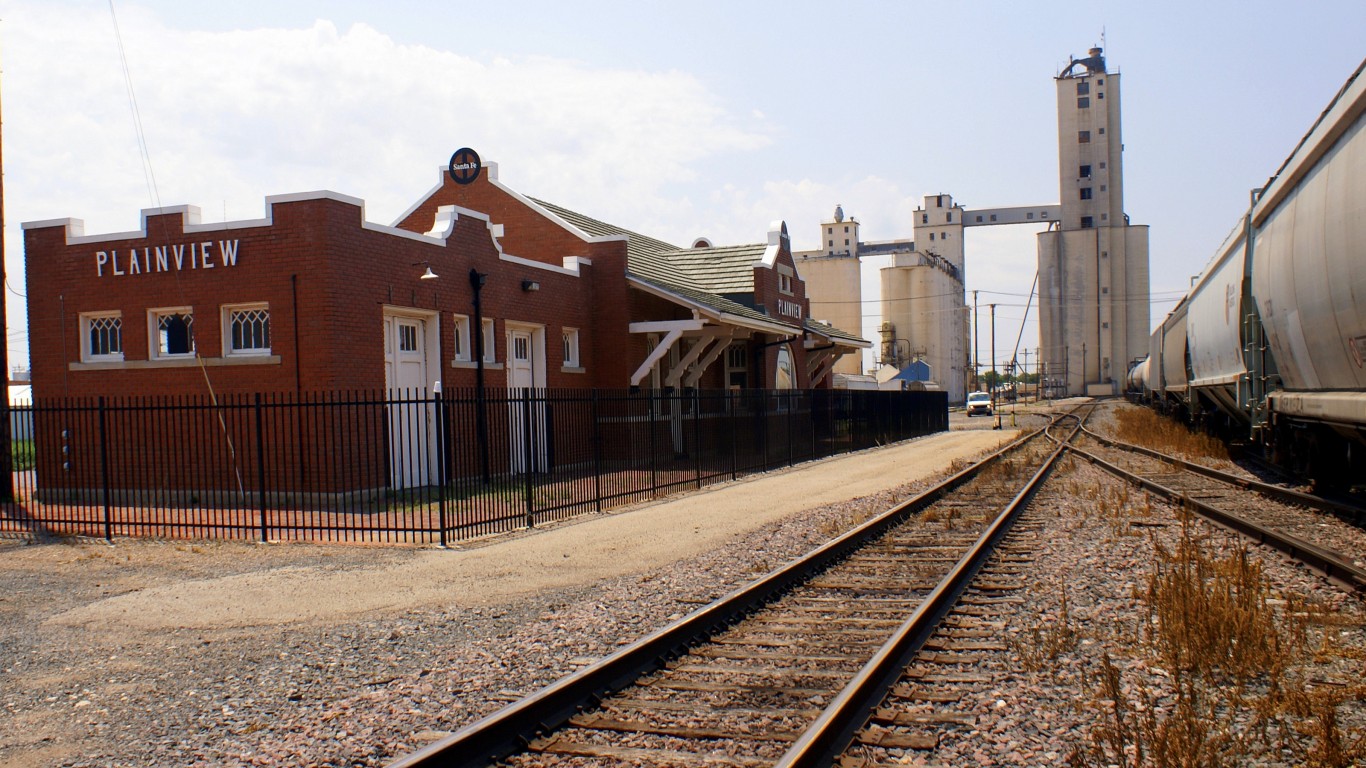






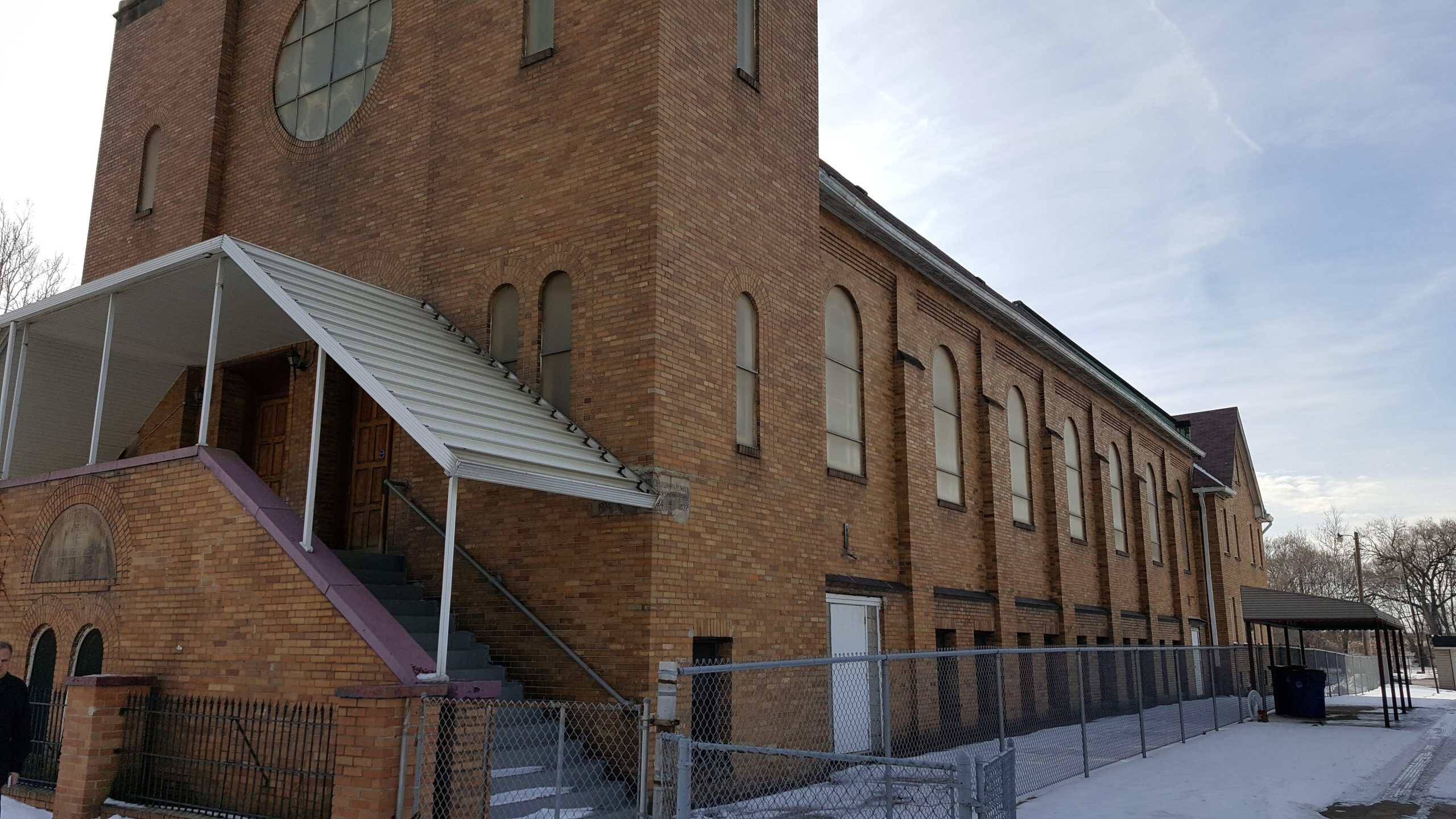
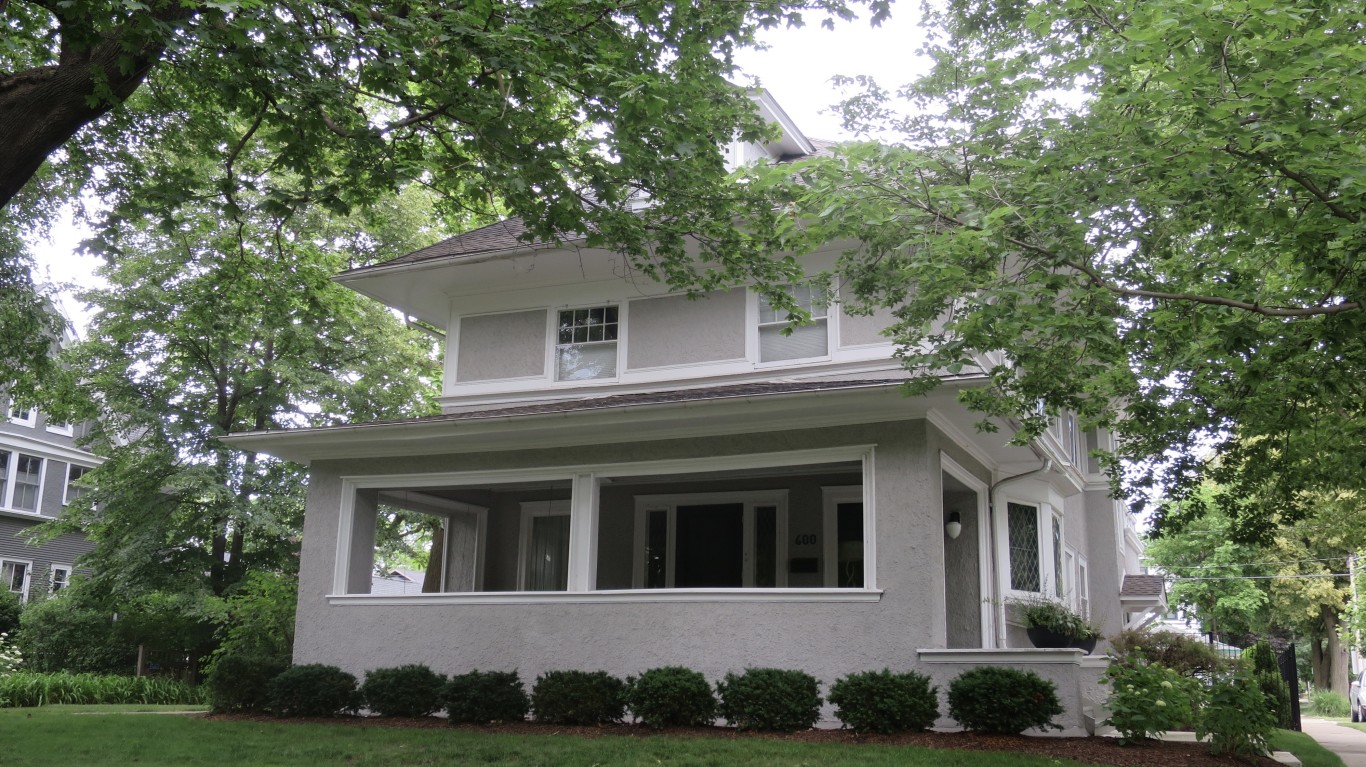

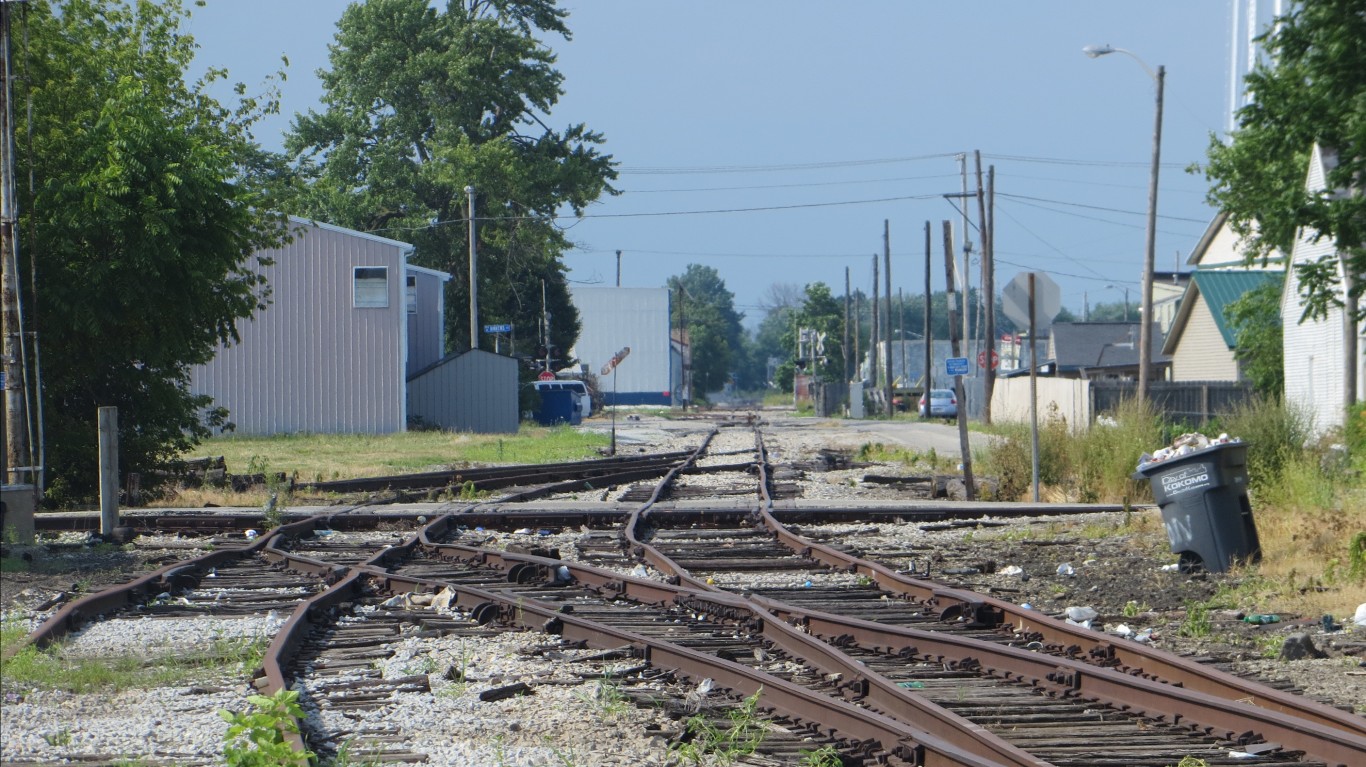

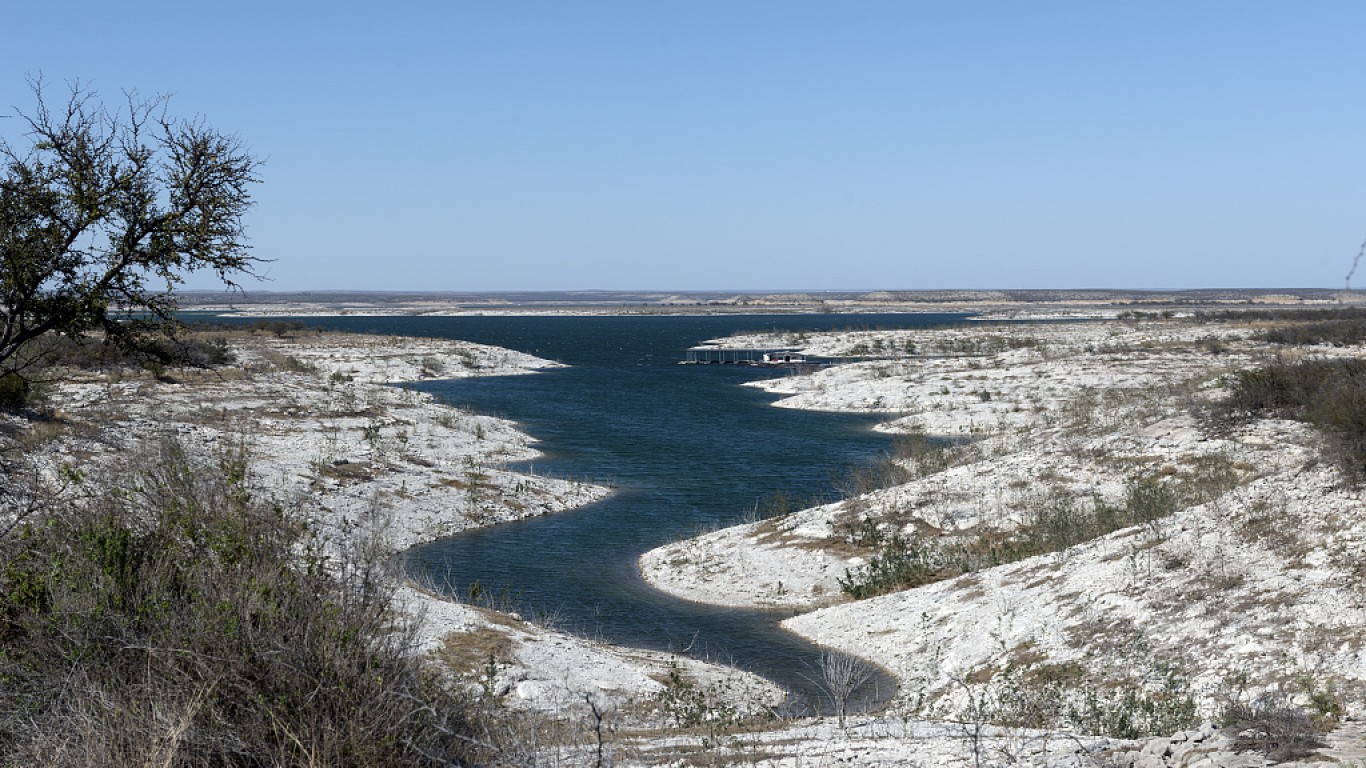
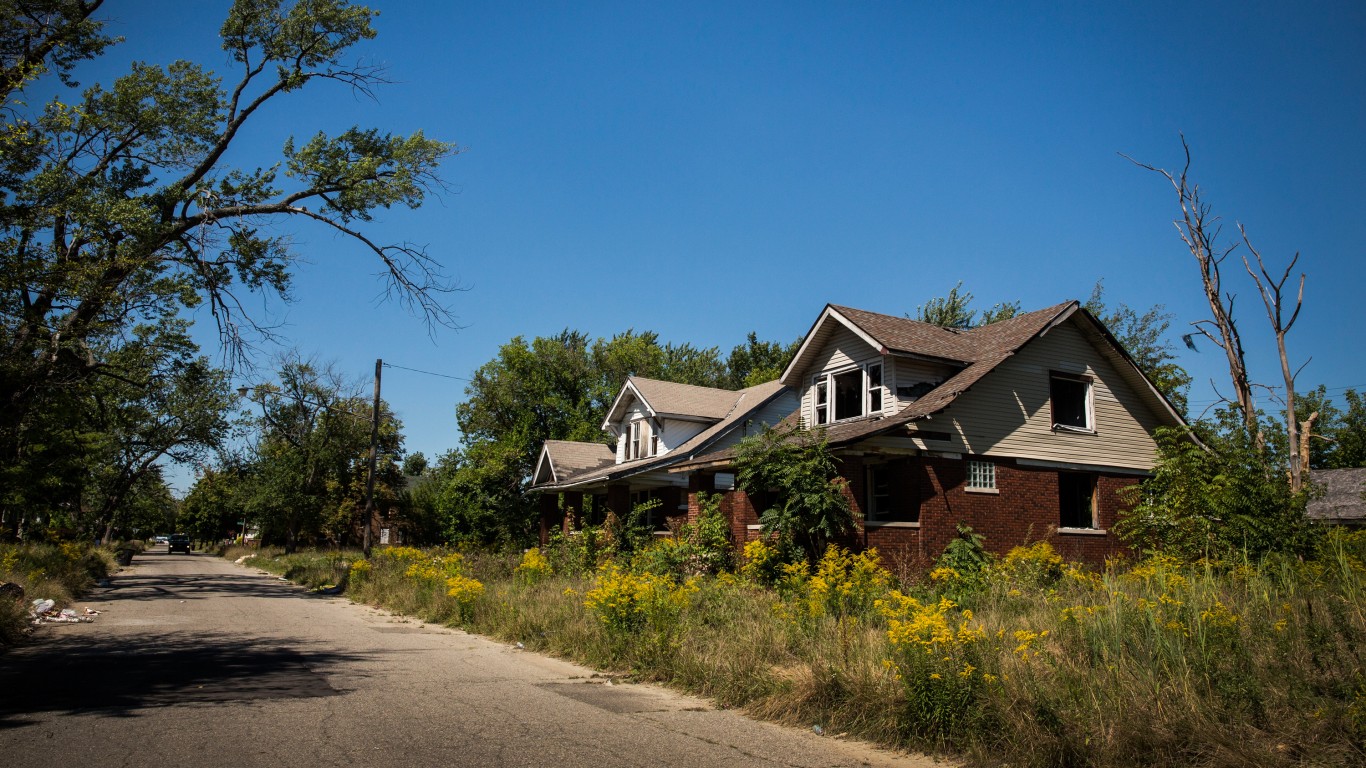
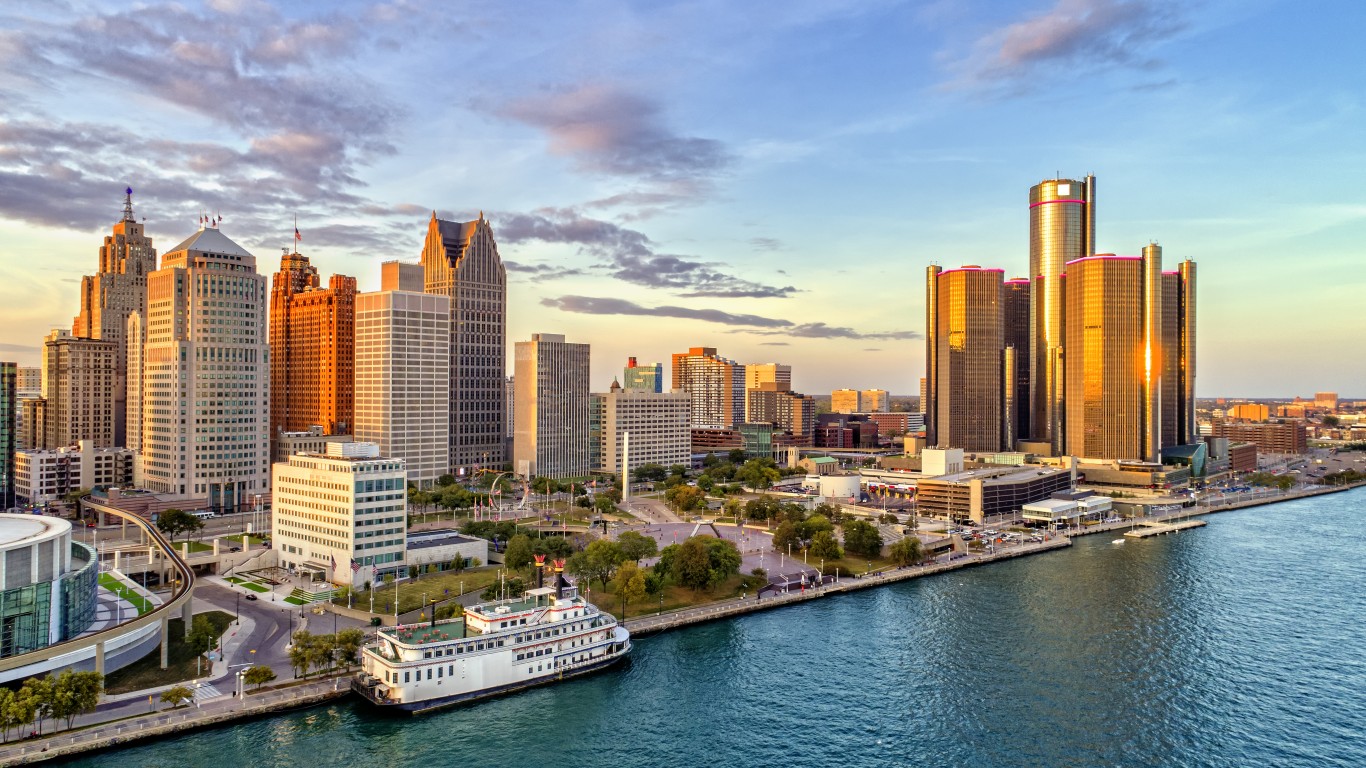








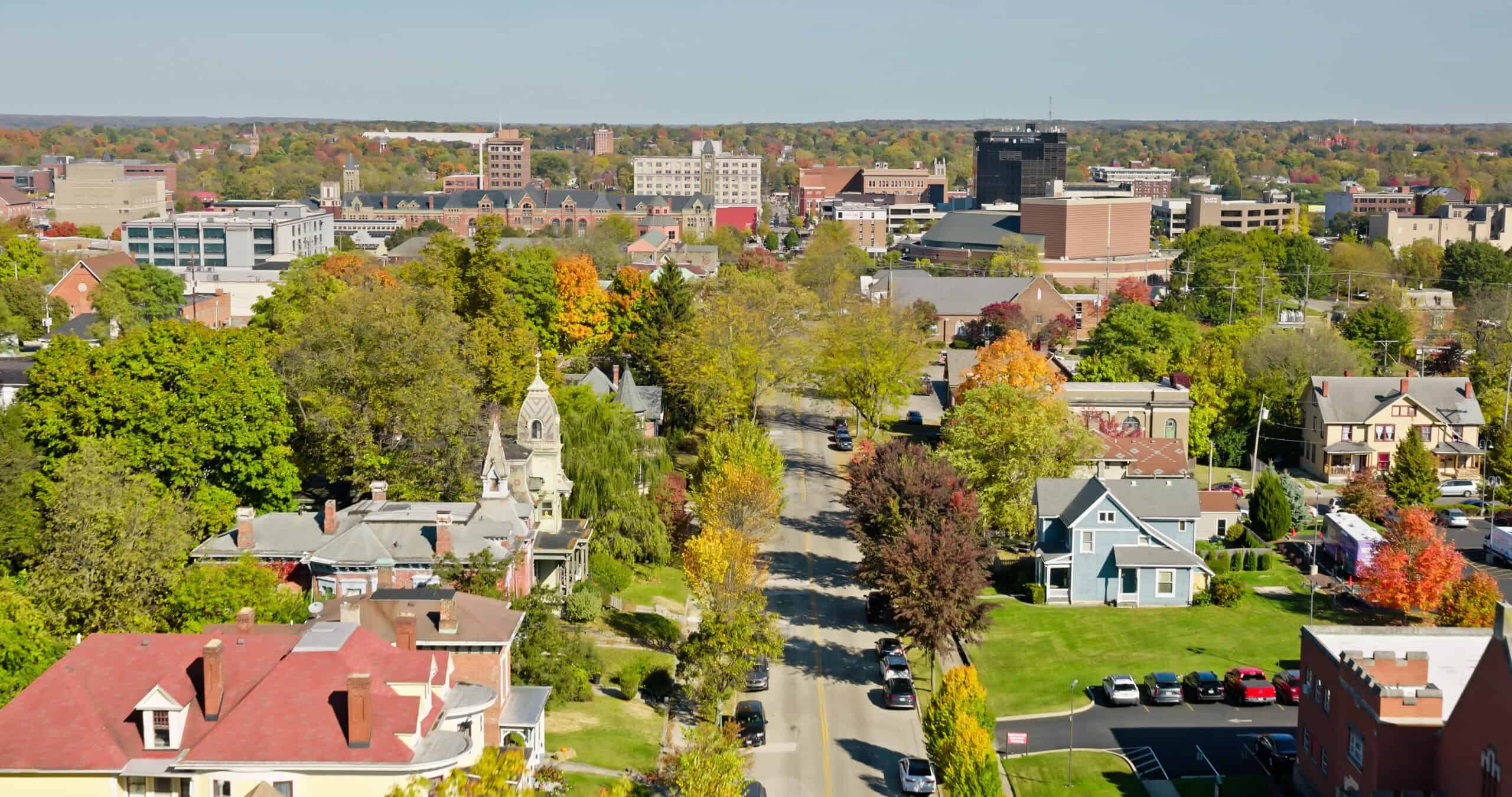


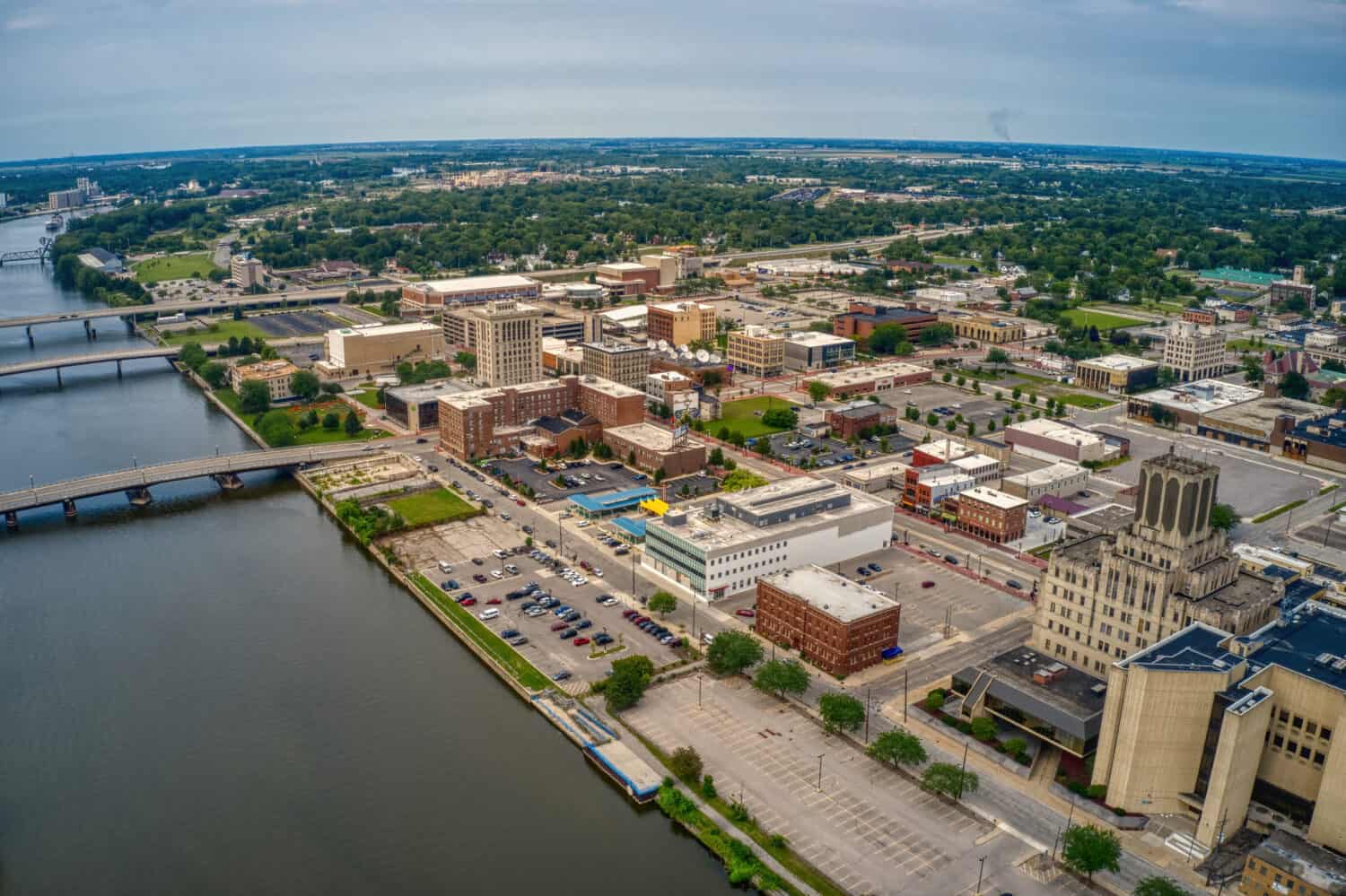


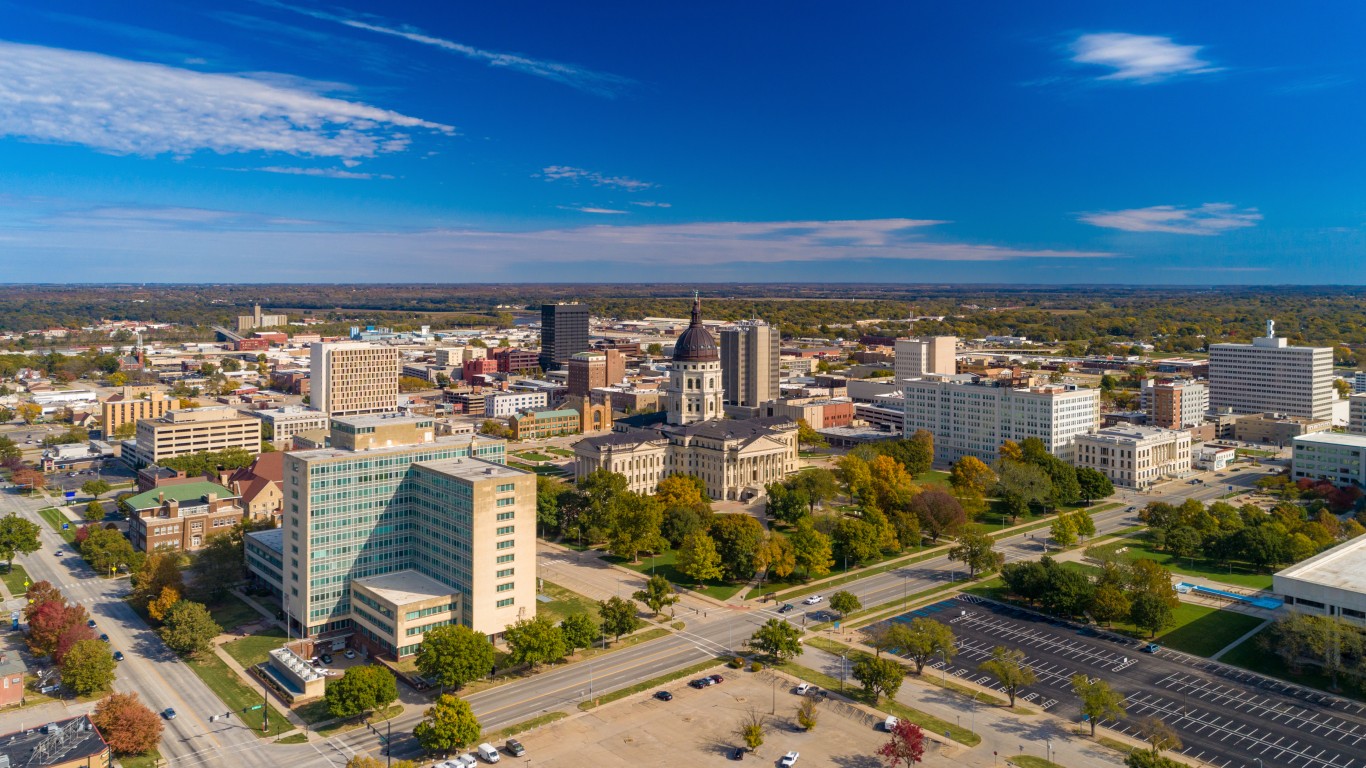
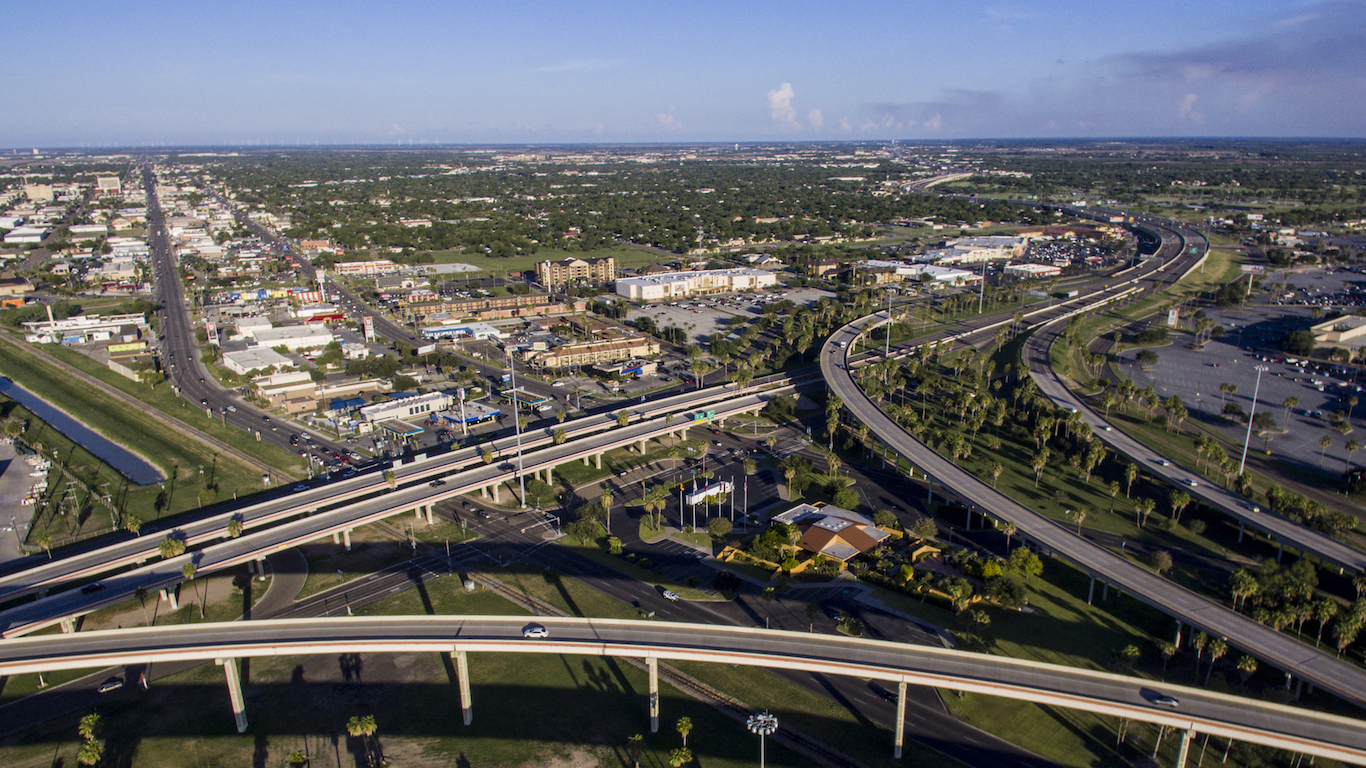
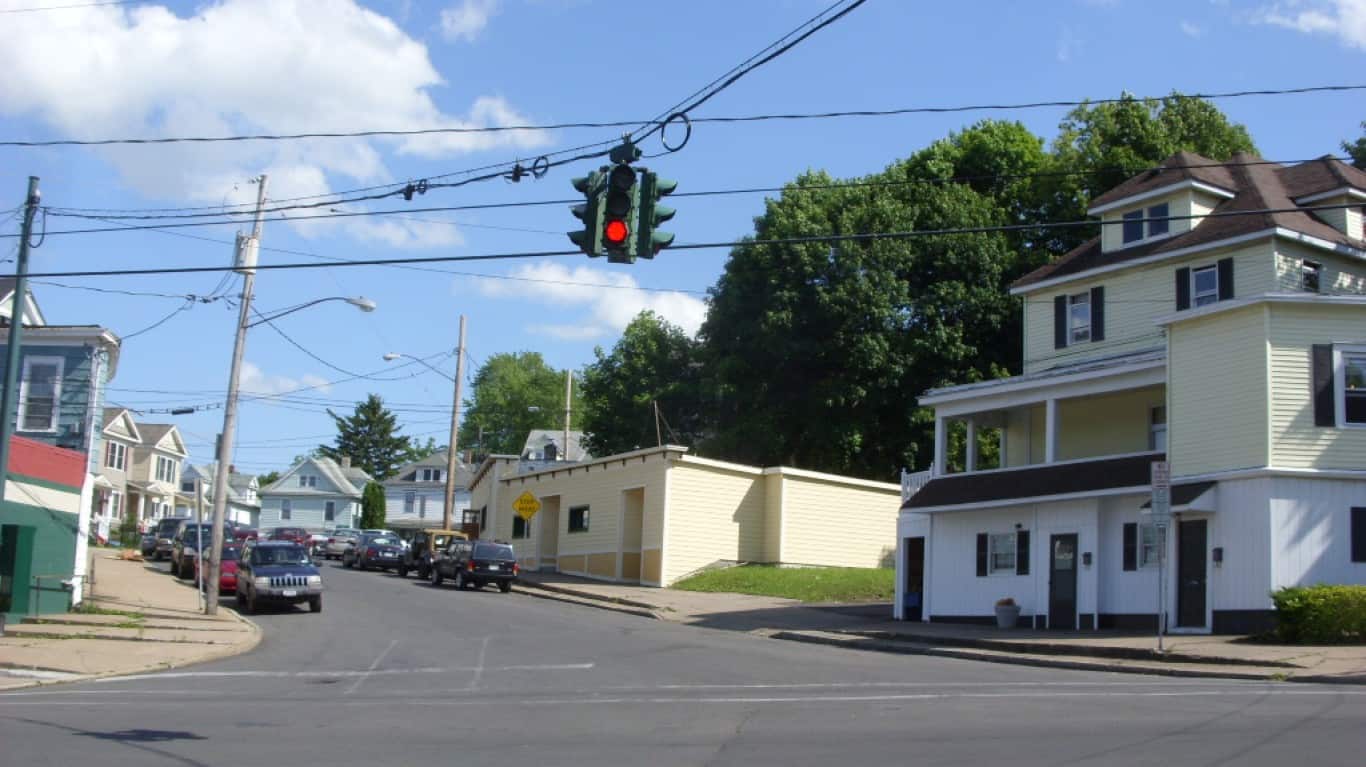

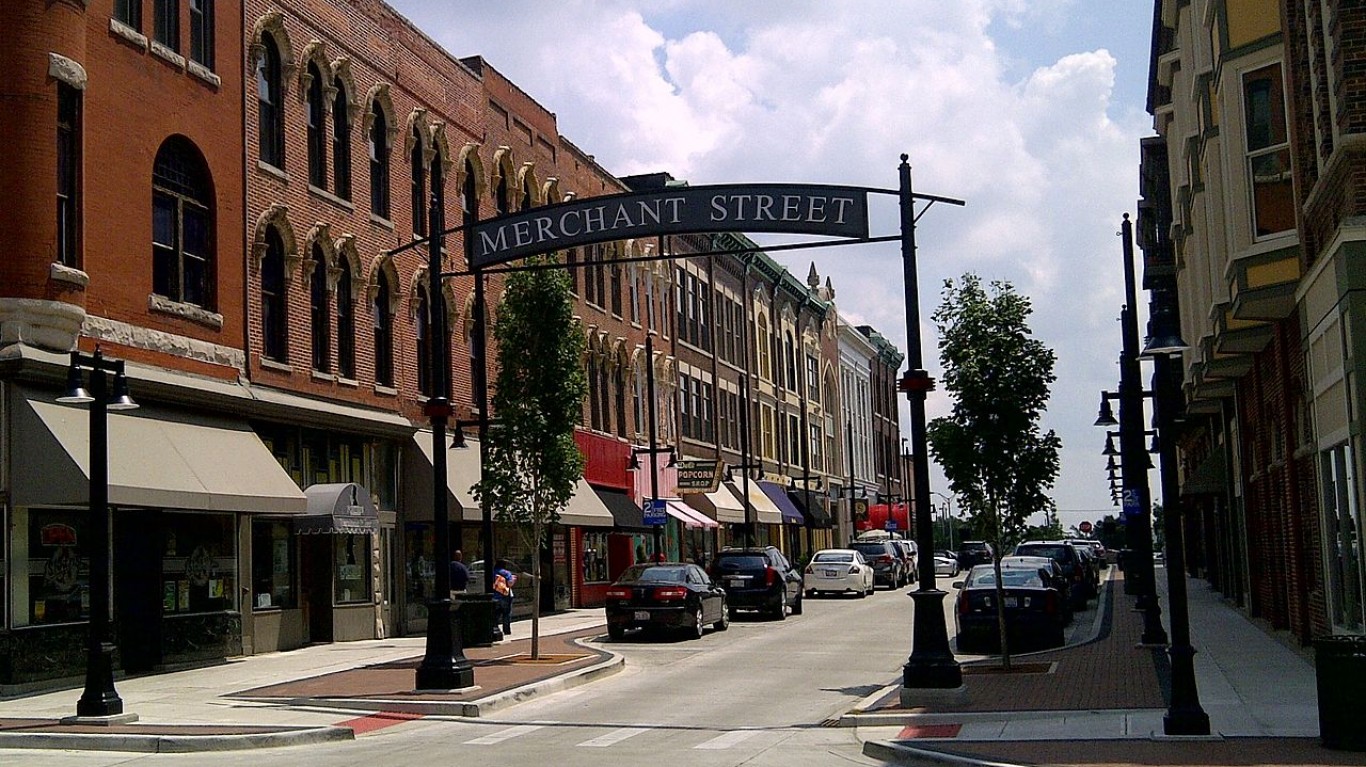


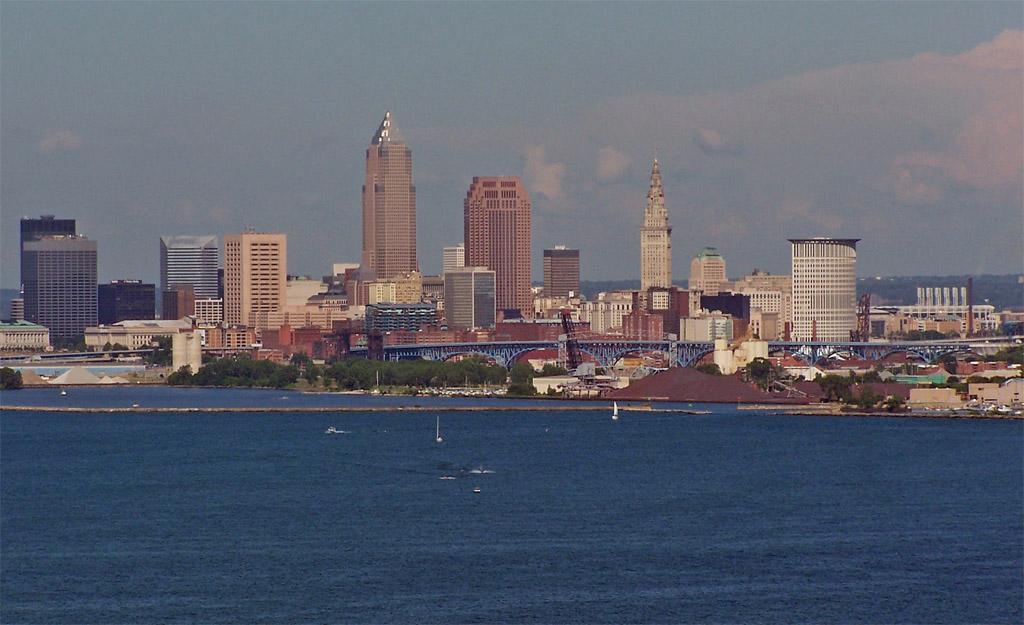









































These Cities Will Lose The Most Residents By 2100
Key Points
- Over the next 75 years, the U.S. population will increasingly concentrate in a few key megaregions in the Sun Belt and Mountain West.
- In dozens of legacy cities in the Midwest, however, populations are forecast to shrink by more than 20,000.
- Of the 40 cities forecast to shrink the most through 2100, 9 are in Michigan and 7 are in Ohio.
- Forecasting growth in your financial future? Click here to get started.
Over the next 75 years, the U.S. population will increasingly concentrate into a few select megaregions. Driven by domestic and international immigration, and accommodated by available land and housing stock, metropolitan areas like Phoenix and Dallas are projected to have substantial growth, with the populations of some suburban areas set to double, triple, and even quadruple.
In some parts of the country, however, a different story is unfolding. Long plagued by economic disinvestment, declining industry, and outbound migration, legacy cities across the Midwest and Northeast are projected to shrink dramatically, with dozens forecast to lose tens of thousands of residents. Some cities will continue a trend of decline that started in the mid-20th century, while others will peak within the next few decades and then start to contract.
Using long-range population forecasts from the University of Illinois Chicago, 24/7 Wall St. determined the cities that will lose the most residents by 2100. Of the 40 cities projected to lose the most residents through century's end, nine are in Michigan and seven are in Ohio. Illinois is home to six, while New York is home to four. Only five cities — Pine Bluff, Arkansas, Greenville, Mississippi, Plainview, Texas, Del Rio, Texas, and Brownsville, Texas — are in the South.
Shrinking cities reflect deeper structural challenges in the American economy that affect everything from local infrastructure to national policy. As populations decline, cities are left with too much infrastructure and not enough tax revenue to maintain it, leading to service cuts, rising per capita costs, and visible decay through vacant homes and abandoned businesses. The economic fallout is compounded by social consequences like concentrated poverty, worsening health outcomes, and loss of community. While most urban planning is oriented around accommodating urban growth, a new approach may be required to address the massive contraction that major U.S. cities will undergo in the 21st century. A closer look at the data reveals the cities that will lose the most residents by 2100.
To identify the cities that will lose the most residents by 2100, 24/7 Wall St. reviewed data on population forecasts from the University of Illinois Chicago. Cities were ranked based on raw forecast population decline from 2020 to 2100. Population forecasts are based on the SSP2 shared social pathway scenario, a "middle-of-the-road" scenario in which demographic and economic trends largely continue in line with historical trends. Supplemental data on current population, median household income, and industry concentration are from the U.S. Census Bureau's American Community Survey.
40. Jackson, MI
- Forecast population decline, 2020-2100: -12,594 residents (-40.0% decrease)
- Forecast population, 2100: 18,888 residents
- Current population, 2020: 31,481 residents
- Median household income: $42,848
- Most concentrated economic sectors: Manufacturing, accommodation and food services, utilities, health care and social assistance, retail trade
39. New Castle, PA
- Forecast population decline, 2020-2100: -12,612 residents (-57.2% decrease)
- Forecast population, 2100: 9,427 residents
- Current population, 2020: 22,039 residents
- Median household income: $41,478
- Most concentrated economic sectors: Management of companies and enterprises, health care and social assistance, manufacturing, transportation and warehousing, retail trade
38. Nashua, NH
- Forecast population decline, 2020-2100: -12,790 residents (-13.9% decrease)
- Forecast population, 2100: 79,023 residents
- Current population, 2020: 91,814 residents
- Median household income: $92,457
- Most concentrated economic sectors: Manufacturing, retail trade, construction, information, professional, scientific, and technical services
37. Plainview, TX
- Forecast population decline, 2020-2100: -12,880 residents (-63.4% decrease)
- Forecast population, 2100: 7,451 residents
- Current population, 2020: 20,331 residents
- Median household income: $45,991
- Most concentrated economic sectors: Mining, quarrying, and oil and gas extraction, agriculture, forestry, fishing and hunting, construction, educational services, public administration
36. Freeport, IL
- Forecast population decline, 2020-2100: -13,305 residents (-55.2% decrease)
- Forecast population, 2100: 10,797 residents
- Current population, 2020: 24,102 residents
- Median household income: $48,181
- Most concentrated economic sectors: Agriculture, forestry, fishing and hunting, manufacturing, other services, except public administration, health care and social assistance, administrative and support and waste management services
35. Port Huron, MI
- Forecast population decline, 2020-2100: -13,412 residents (-46.0% decrease)
- Forecast population, 2100: 15,727 residents
- Current population, 2020: 29,139 residents
- Median household income: $49,377
- Most concentrated economic sectors: Manufacturing, accommodation and food services, other services, except public administration, health care and social assistance, arts, entertainment, and recreation
34. Granite City, IL
- Forecast population decline, 2020-2100: -13,589 residents (-49.0% decrease)
- Forecast population, 2100: 14,121 residents
- Current population, 2020: 27,710 residents
- Median household income: $60,490
- Most concentrated economic sectors: Transportation and warehousing, other services, except public administration, manufacturing, accommodation and food services, administrative and support and waste management services
33. Jamestown, NY
- Forecast population decline, 2020-2100: -13,661 residents (-47.3% decrease)
- Forecast population, 2100: 15,200 residents
- Current population, 2020: 28,861 residents
- Median household income: $44,878
- Most concentrated economic sectors: Health care and social assistance, manufacturing, accommodation and food services, utilities, administrative and support and waste management services
32. Moline, IL
- Forecast population decline, 2020-2100: -13,752 residents (-31.8% decrease)
- Forecast population, 2100: 29,484 residents
- Current population, 2020: 43,236 residents
- Median household income: $63,959
- Most concentrated economic sectors: Manufacturing, administrative and support and waste management services, public administration, retail trade, other services, except public administration
31. Camden, NJ
- Forecast population decline, 2020-2100: -13,970 residents (-19.3% decrease)
- Forecast population, 2100: 58,261 residents
- Current population, 2020: 72,231 residents
- Median household income: $40,450
- Most concentrated economic sectors: Transportation and warehousing, administrative and support and waste management services, retail trade, wholesale trade, accommodation and food services
30. Parma, OH
- Forecast population decline, 2020-2100: -14,143 residents (-17.3% decrease)
- Forecast population, 2100: 67,519 residents
- Current population, 2020: 81,662 residents
- Median household income: $67,425
- Most concentrated economic sectors: Wholesale trade, transportation and warehousing, retail trade, manufacturing, finance and insurance
29. Mansfield, OH
- Forecast population decline, 2020-2100: -14,676 residents (-30.7% decrease)
- Forecast population, 2100: 33,127 residents
- Current population, 2020: 47,802 residents
- Median household income: $42,605
- Most concentrated economic sectors: Manufacturing, accommodation and food services, health care and social assistance, information, transportation and warehousing
28. Pittsfield, MA
- Forecast population decline, 2020-2100: -14,779 residents (-33.5% decrease)
- Forecast population, 2100: 29,345 residents
- Current population, 2020: 44,124 residents
- Median household income: $68,386
- Most concentrated economic sectors: Management of companies and enterprises, health care and social assistance, retail trade, arts, entertainment, and recreation, educational services
27. Kokomo, IN
- Forecast population decline, 2020-2100: -14,884 residents (-24.8% decrease)
- Forecast population, 2100: 45,088 residents
- Current population, 2020: 59,971 residents
- Median household income: $54,195
- Most concentrated economic sectors: Manufacturing, other services, except public administration, accommodation and food services, retail trade, health care and social assistance
26. Lima, OH
- Forecast population decline, 2020-2100: -14,968 residents (-41.8% decrease)
- Forecast population, 2100: 20,826 residents
- Current population, 2020: 35,794 residents
- Median household income: $43,370
- Most concentrated economic sectors: Manufacturing, accommodation and food services, retail trade, other services, except public administration, administrative and support and waste management services
25. Del Rio, TX
- Forecast population decline, 2020-2100: -15,490 residents (-44.3% decrease)
- Forecast population, 2100: 19,466 residents
- Current population, 2020: 34,956 residents
- Median household income: $59,588
- Most concentrated economic sectors: Mining, quarrying, and oil and gas extraction, public administration, utilities, transportation and warehousing, accommodation and food services
24. Burton, MI
- Forecast population decline, 2020-2100: -16,137 residents (-54.0% decrease)
- Forecast population, 2100: 13,756 residents
- Current population, 2020: 29,893 residents
- Median household income: $57,767
- Most concentrated economic sectors: Manufacturing, administrative and support and waste management services, accommodation and food services, retail trade, health care and social assistance
23. Dearborn, MI
- Forecast population decline, 2020-2100: -16,147 residents (-14.6% decrease)
- Forecast population, 2100: 94,528 residents
- Current population, 2020: 110,675 residents
- Median household income: $65,192
- Most concentrated economic sectors: Manufacturing, transportation and warehousing, accommodation and food services, retail trade, health care and social assistance
22. Richmond, IN
- Forecast population decline, 2020-2100: -16,818 residents (-46.8% decrease)
- Forecast population, 2100: 19,110 residents
- Current population, 2020: 35,928 residents
- Median household income: $46,395
- Most concentrated economic sectors: Manufacturing, health care and social assistance, other services, except public administration, accommodation and food services, construction
21. Anderson, IN
- Forecast population decline, 2020-2100: -17,943 residents (-32.6% decrease)
- Forecast population, 2100: 37,168 residents
- Current population, 2020: 55,112 residents
- Median household income: $47,221
- Most concentrated economic sectors: Accommodation and food services, administrative and support and waste management services, manufacturing, arts, entertainment, and recreation, construction
20. Taylor, MI
- Forecast population decline, 2020-2100: -18,822 residents (-29.5% decrease)
- Forecast population, 2100: 44,999 residents
- Current population, 2020: 63,821 residents
- Median household income: $59,537
- Most concentrated economic sectors: Transportation and warehousing, manufacturing, utilities, retail trade, accommodation and food services
19. Bay City, MI
- Forecast population decline, 2020-2100: -19,100 residents (-58.2% decrease)
- Forecast population, 2100: 13,734 residents
- Current population, 2020: 32,834 residents
- Median household income: $47,904
- Most concentrated economic sectors: Accommodation and food services, health care and social assistance, retail trade, manufacturing, other services, except public administration
18. Warren, OH
- Forecast population decline, 2020-2100: -19,576 residents (-49.7% decrease)
- Forecast population, 2100: 19,840 residents
- Current population, 2020: 39,416 residents
- Median household income: $36,955
- Most concentrated economic sectors: Accommodation and food services, administrative and support and waste management services, manufacturing, transportation and warehousing, retail trade
17. Greenville, MS
- Forecast population decline, 2020-2100: -20,280 residents (-67.9% decrease)
- Forecast population, 2100: 9,594 residents
- Current population, 2020: 29,874 residents
- Median household income: $36,297
- Most concentrated economic sectors: Utilities, public administration, retail trade, administrative and support and waste management services, accommodation and food services
16. Waukegan, IL
- Forecast population decline, 2020-2100: -22,143 residents (-24.6% decrease)
- Forecast population, 2100: 67,710 residents
- Current population, 2020: 89,854 residents
- Median household income: $70,578
- Most concentrated economic sectors: Administrative and support and waste management services, manufacturing, wholesale trade, transportation and warehousing, accommodation and food services
15. Westland, MI
- Forecast population decline, 2020-2100: -22,607 residents (-26.3% decrease)
- Forecast population, 2100: 63,366 residents
- Current population, 2020: 85,973 residents
- Median household income: $62,216
- Most concentrated economic sectors: Manufacturing, transportation and warehousing, accommodation and food services, retail trade, wholesale trade
14. Springfield, OH
- Forecast population decline, 2020-2100: -23,769 residents (-40.3% decrease)
- Forecast population, 2100: 35,242 residents
- Current population, 2020: 59,011 residents
- Median household income: $45,883
- Most concentrated economic sectors: Management of companies and enterprises, manufacturing, accommodation and food services, health care and social assistance, administrative and support and waste management services
13. Cincinnati, OH
- Forecast population decline, 2020-2100: -24,654 residents (-7.9% decrease)
- Forecast population, 2100: 286,728 residents
- Current population, 2020: 311,383 residents
- Median household income: $51,707
- Most concentrated economic sectors: Management of companies and enterprises, transportation and warehousing, administrative and support and waste management services, health care and social assistance, accommodation and food services
12. Belleville, IL
- Forecast population decline, 2020-2100: -25,896 residents (-60.7% decrease)
- Forecast population, 2100: 16,770 residents
- Current population, 2020: 42,666 residents
- Median household income: $60,529
- Most concentrated economic sectors: Transportation and warehousing, arts, entertainment, and recreation, real estate and rental and leasing, health care and social assistance, retail trade
11. Saginaw, MI
- Forecast population decline, 2020-2100: -26,629 residents (-59.9% decrease)
- Forecast population, 2100: 17,828 residents
- Current population, 2020: 44,457 residents
- Median household income: $37,298
- Most concentrated economic sectors: Health care and social assistance, accommodation and food services, utilities, management of companies and enterprises, manufacturing
10. Pine Bluff, AR
- Forecast population decline, 2020-2100: -28,224 residents (-68.0% decrease)
- Forecast population, 2100: 13,286 residents
- Current population, 2020: 41,510 residents
- Median household income: $41,250
- Most concentrated economic sectors: Public administration, manufacturing, arts, entertainment, and recreation, health care and social assistance, retail trade
9. Pittsburgh, PA
- Forecast population decline, 2020-2100: -28,304 residents (-9.3% decrease)
- Forecast population, 2100: 276,343 residents
- Current population, 2020: 304,647 residents
- Median household income: $64,137
- Most concentrated economic sectors: Educational services, health care and social assistance, finance and insurance, professional, scientific, and technical services, arts, entertainment, and recreation
8. Topeka, KS
- Forecast population decline, 2020-2100: -30,480 residents (-23.9% decrease)
- Forecast population, 2100: 96,960 residents
- Current population, 2020: 127,440 residents
- Median household income: $55,902
- Most concentrated economic sectors: Public administration, utilities, finance and insurance, health care and social assistance, accommodation and food services
7. Brownsville, TX
- Forecast population decline, 2020-2100: -30,675 residents (-16.3% decrease)
- Forecast population, 2100: 157,637 residents
- Current population, 2020: 188,312 residents
- Median household income: $48,675
- Most concentrated economic sectors: Educational services, health care and social assistance, mining, quarrying, and oil and gas extraction, administrative and support and waste management services, retail trade
6. Syracuse, NY
- Forecast population decline, 2020-2100: -37,019 residents (-24.8% decrease)
- Forecast population, 2100: 112,432 residents
- Current population, 2020: 149,452 residents
- Median household income: $45,845
- Most concentrated economic sectors: Educational services, health care and social assistance, accommodation and food services, utilities, other services, except public administration
5. Buffalo, NY
- Forecast population decline, 2020-2100: -39,929 residents (-14.3% decrease)
- Forecast population, 2100: 239,951 residents
- Current population, 2020: 279,881 residents
- Median household income: $48,050
- Most concentrated economic sectors: Health care and social assistance, educational services, accommodation and food services, finance and insurance, administrative and support and waste management services
4. Decatur, IL
- Forecast population decline, 2020-2100: -43,064 residents (-60.7% decrease)
- Forecast population, 2100: 27,862 residents
- Current population, 2020: 70,926 residents
- Median household income: $50,809
- Most concentrated economic sectors: Management of companies and enterprises, manufacturing, agriculture, forestry, fishing and hunting, real estate and rental and leasing, utilities
3. Flint, MI
- Forecast population decline, 2020-2100: -49,944 residents (-61.1% decrease)
- Forecast population, 2100: 31,799 residents
- Current population, 2020: 81,743 residents
- Median household income: $36,194
- Most concentrated economic sectors: Manufacturing, accommodation and food services, retail trade, management of companies and enterprises, administrative and support and waste management services
2. Rochester, NY
- Forecast population decline, 2020-2100: -52,298 residents (-24.6% decrease)
- Forecast population, 2100: 160,227 residents
- Current population, 2020: 212,525 residents
- Median household income: $46,628
- Most concentrated economic sectors: Health care and social assistance, educational services, administrative and support and waste management services, accommodation and food services, retail trade
1. Cleveland, OH
- Forecast population decline, 2020-2100: -72,218 residents (-19.3% decrease)
- Forecast population, 2100: 302,785 residents
- Current population, 2020: 375,002 residents
- Median household income: $39,187
- Most concentrated economic sectors: Administrative and support and waste management services, health care and social assistance, accommodation and food services, manufacturing, arts, entertainment, and recreation
The image featured at the top of this post is ©James Andrews / iStock via Getty Images